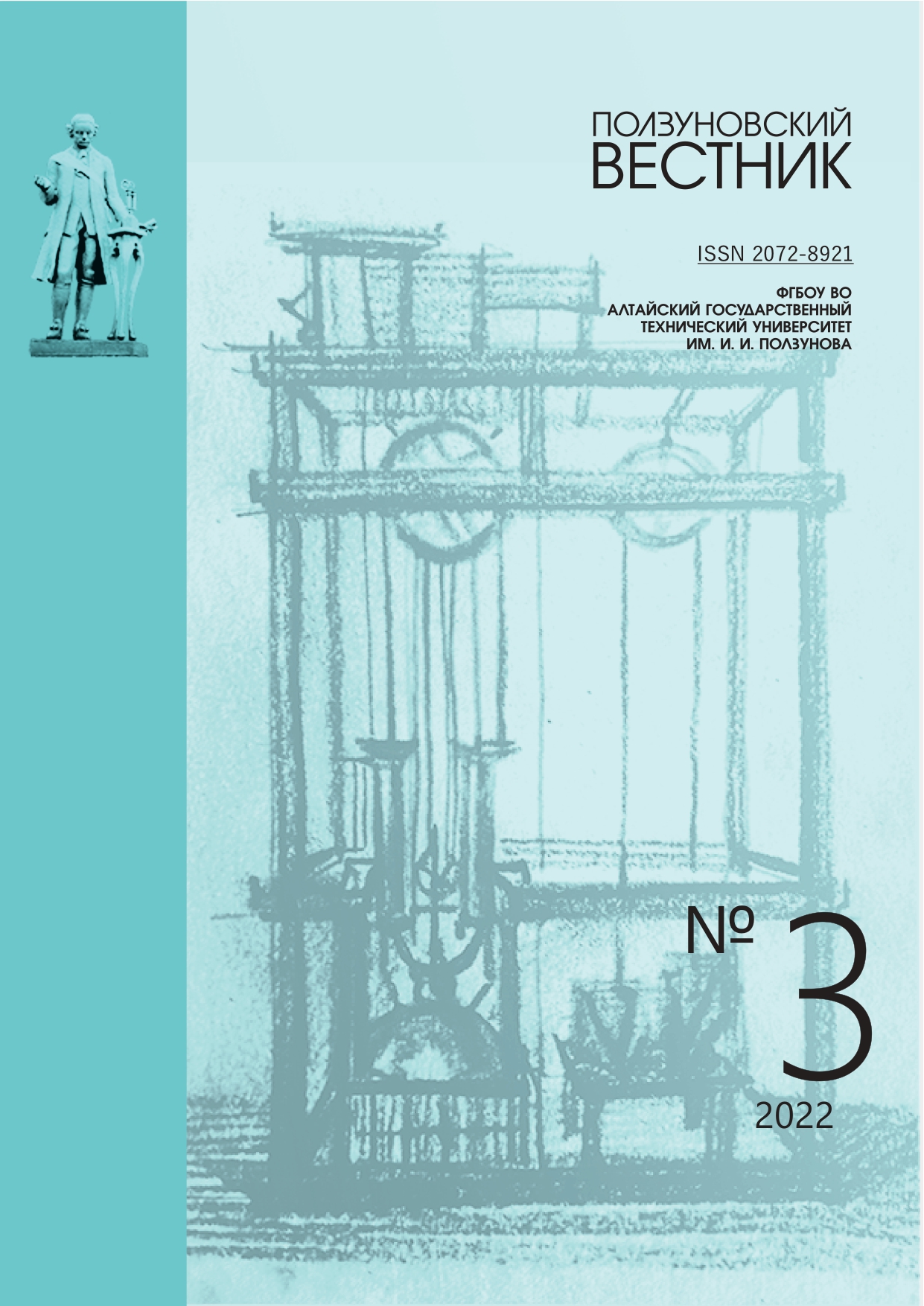QUALITY OF SORGHUM FLOUR AND RHEOLOGICAL PROPERTIES OF DOUGH MADE FROM A MIXTURE OF WHEAT AND SORGHUM FLOUR
EDN: LKQTWR
DOI:
https://doi.org/10.25712/ASTU.2072-8921.2022.03.010Keywords:
wheat baking flour of the highest grade, sorghum flour, steaming, drying, hydrothermal treatment, mix-olab, rheological properties of the dough, water absorption capacity, Profiler, Simulator.Abstract
The quality of flour obtained from bare grain sorghum of the Orlovskoye variety with and without the use of hydrothermal treatment, the quality of mixtures of wheat baking flour of the highest grade and sorghum flour was studied. The rheological properties of dough from flour mixtures are investigated. Preparation of sorghum grain for flour production included purification from impurities, processing in a laboratory peeling and sanding machine, separation of products obtained after peeling and sanding: flour was isolated by passing through a wire mesh sieve No. 08, crushed core - by passing through a punching sieve with a hole diameter of 1.5 mm, the polished kernel and non-husked grains– coming off a sieve with a hole diameter of 1.5 mm, the husk was sifted on a laboratory aspirator. The ground core was crushed on a laboratory hammer mill with a built-in sieve No. 08. Hydrothermal treatment was performed before the grain peeling operation. Hydrothermal treatment included steaming the grain in a laboratory steamer and its subsequent drying in a laboratory dryer. The rheological characteristics of the test were determined on the Mixolab Chopin device (France) using the standard CHOPIN+ protocol and the Profiler system, as well as when determining the characteristics of the farinograph using the Simulator protocol.
It has been established that flour from sorghum grain that has passed the hydrothermal treatment has good organoleptic characteristics, namely: a sweet taste and a pleasant gingerbread smell, but flour from sorghum grain that has not passed the hydrothermal treatment has a lighter shade. Both types of sorghum flour mixed with wheat flour in an amount of 10% reduce the gluten content and strengthen it, reduce the activity of enzymes. At the same time, the introduction of sorghum grain flour into the flour mixture, which has passed the hydrothermal treatment, improves the rheological properties of the dough. Thus, there is an increase in the water-absorbing capacity of flour, the stability of the dough increases and its liquefaction decreases.
References
Тенденции развития хлебопекарного рынка России / Л. Н. Алайкина, О. К. Котар, Н. А. Новикова, Н. В. Уколова // Аграрная наука в XXI веке: проблемы и перспективы. Сборник статей Всероссийской научно-практической конференции. 2019. С. 10-4.
Апаршева, В. В. Композиция растительных ингредиентов в технологии производства хлеба пшеничного // Вестник Мичуринского государственного аграрного университета. 2015. № 3. С. 16-22.
Калмыкова О. В. Влияние функциональных ингредиентов на качество хлебобулочных изделий // Пути интенсификации пр-ва и перераб. с.-х. продукции в соврем. условиях. 2014. С. 228-231.
Матвиенко Е. В. Сорго как пищевая культура // International agricultural journal. 2020. № 3. С.100-108.
Балакай С. Г. Сорго – культура больших возможностей // Научный журнал Российского НИИ проблем мелиорации. 2012. № 1(05). С. 83-90.
FAOSTAT // Food and Agriculture Organization of the United Nations. Электрон. текст. дан. Режим доступа : https://www.fao.org/faostat/en/#data/QCL.
Кононов В. М., Селиванова В. Ю. Пищевое сорго – перспективная зерновая культура // Научно-агрономический журнал. 2008. С. 26-30.
Разработка рецептуры хлеба профилактического назначения с применением муки из цельносмолотого зерна сорго и морковного порошка / В. С. Агибалова, Т. Н. Тертычная, Е. Е. Курчаева, И. В. Мажулина, Е. А. Андрианов // Хлебопродукты. 2015. № 6. С. 46-47.
Пашкова Е. Ю., Волкова А. В. Влияние применения муки из зерна сорго на качество хлеба из муки пшеничной хлебопекарной высшего сорта // Инновационные достижения науки и техники АПК. Сборник научных трудов Международной научно-практической конференции. 2018. С. 208-212.
Sorghum Grain: From Genotype, Nutrition, and Phenolic Profile to Its Health Benefits and Food Applications / Y. Xiong, P. Zhang, R. D. Warner, Z. Fang // Comprehensive Reviewsin Food Science and Food Safety. 2019. Vol. 18. P. 2025-2046.
Перспективы применения зерна сорго для производства хлебобулочных изделий / В. С. Агибалова, Т. Н. Тертычная, В. И. Манжесов // Вестник Воронежского государственного аграрного университета. 2012. № 2 (33). С. 189-191.
Анализ применения зерна сорго и продуктов его переработки в технологии хлебобулочных и мучных кондитерских изделий / Никитин И. А., Свечников А. Ю., Зоц А. Д., Алфимова А. Д., Татраев Д. А., Мириев М. О. // Технические науки — от теории к практике. 2016. № 12 (60). С. 123-129.
Время чествовать сорго / А. З. Большаков, С. М. Бондаренко, С. В. Кадыров, Ю. Н. Клепко и др. Ростов-на-Дону: ЗАО «Ростиздат», 2008. 60 с.
Sorghum bran as an antioxidant in pork and poultry products / A. R. Cabral, C. Waters, H. L. Laird, L.C. Cavitt, R. K. Miller, W. L. Rooney, C. Z. Alvarado, J. M. Awika, C. R. Kerth // Meat and Muscle Biology. 2019. № 2. P. 83.
The Role of Empirical Rheology in Flour Quality Control / T. Dapčević Hadnađev, M. Pojić, M. Hadnađev, A. Torbica // Wide Spectra of Quality Control. 2011. P. 335-360.
Rumler R., Schönlechner R. Effect of Sorghum on Rheology and Final Quality of Western Style Breads: A Literature Review // Foods. 2021. P. 1-15.
Мельников Е. М. Интенсификация технологических процессов крупяного производства: автореф. дис. … д-ра техн. наук: 05.18.02. Москва, 1980. 41 с..
Индекс качества. Современный метод контроля качества муки по реологическим свойствам теста, определяемым с помощью Mixolab Profiler // Индекс качества. Электрон. текст. дан. Режим доступа : https://soctrade-agro.ru/upload/iblock/819/8193aebed-77c480274d972eed22d9896.pdf.
ГОСТ ISO 17718-2015 Зерно и мука из мягкой пшеницы. Определение реологических свойств теста в зависимости от условий замеса и повышения температуры. Москва: Стандартинформ, 2016. 28 с.
Downloads
Published
How to Cite
Issue
Section
License
Copyright (c) 2022 Ekaterina S. Serebrenikova, Ludmila V. Anisimova

This work is licensed under a Creative Commons Attribution 4.0 International License.
















 .
. This work is licensed under a
This work is licensed under a 
